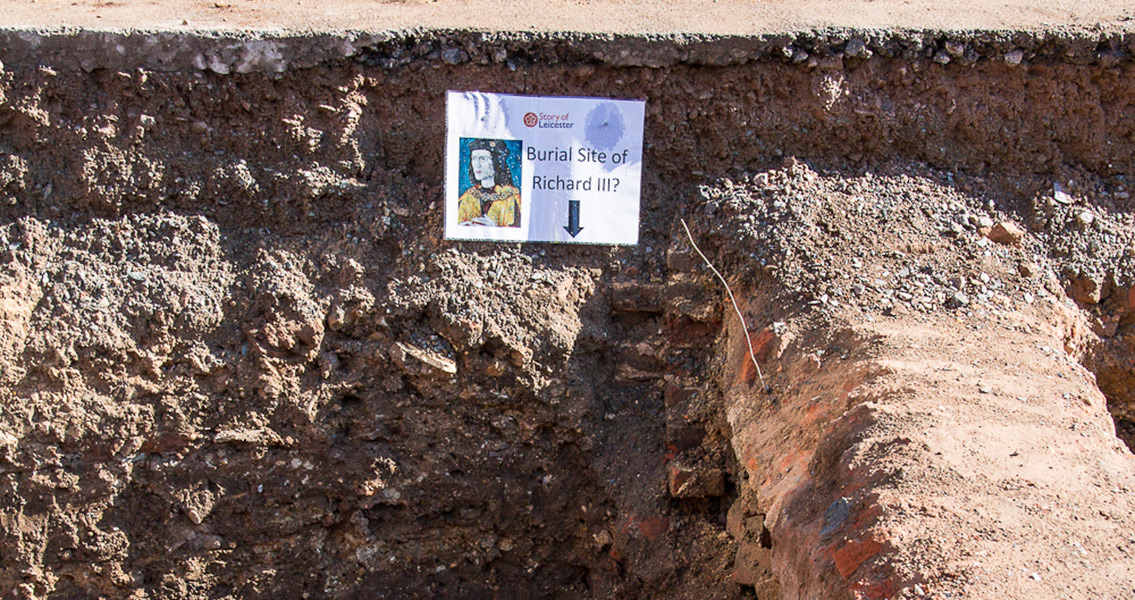<![CDATA[2014 has seen a host of fascinating discoveries, surprise revelelations and exciting research in the fields of archaeology and history. From new contributions about prehistoric migration patterns, to suggestions that Van Gogh was murdered, it has been a year filled with stories from all eras of the past. It has also seen significant developments in the ways history and archaeology are presented, from crowd funded digs to the constant updates on Richard III and the Amphipolis tomb, it is clear that the disciplines can remain popular and relevant despite cuts in government and university funding. Richard III In February 2013 archaeologists from the University of Leicester excavated the remains of British King Richard III from a car park. It has been this year however, that analysis of the remains began in earnest, leading to a series of fascinating revelations. Richard III reigned in controversial circumstances from 1483 until his death at the Battle of Bosworth in 1485. His life has always been a source of mystery, and studies of his remains have raised more questions than they have answered. Chemical analysis provided information on Richard's lavish diet, one that seemed far more indulgent than other royalty from the period. A forensic analysis on his skeleton helped piece together details of his final moments, and suggested that he may have died in circumstances different to those depicted in the history books. Finally, and perhaps most intriguingly, a recent study on Richard's DNA has raised questions about his legitimacy, and whether he had any claim to the throne in the first place. This last fact has the potential to throw into doubt the legitimacy of a host of monarchs throughout British history. Human migration Several studies this year have provided fresh insights about our distant past, and ancient migration patterns. Examples of Levallois tools, a revolutionary stone technology archaeologists usually assume to have been invented in Africa and then distributed to Europe and Asia through migration, were found in Armenia. Based on dating, archaeologists think the tools in Armenia were invented independently, rather than being passed on from Africa. A stone tool discovered in the Anatolian peninsula in Turkey has been precisely dated by a team of archaeologists and geologists. It suggests that humans first migrated across the peninsula to Europe around 1.2 million years ago. Elsewhere, the seafaring prowess of ancient mariners in the Southern hemisphere has also been revealed. DNA analysis on Easter Islanders has found traces of Native American and Polynesian DNA, suggesting they had contact with the South American mainland hundreds of years before the arrival of Europeans. The presence of sweet potato in ancient Easter Islander diets could be explained by this contact. Murder Mysteries and Mystery Illnesses Questions have been raised about the deaths of two hugely important cultural figures; Chopin and Van Gogh. An article published in Vanity Fair questioned the accepted view that Vincent Van Gogh, a known sufferer of mental illness, killed himself. Based on forensic analysis, the article suggested he could have in fact been murdered. Frederic Chopin is generally considered to have died from Tuberculosis. Earlier this year his heart was exhumed from the Warsaw church where it had been stored, to assess the cause of death. The investigators confirmed tuberculosis, but it has since been suggested that this conclusion was based purely on a superficial examination. Criticism of their examination methods, combined with supposed records from Chopin's doctor, have led to suggestions he may have died from another ailment. Alexander the Great Era tomb in Amphipolis Like analysis of Richard III's remains, the discovery of a 2,300 year old tomb in the ancient Greek city of Amphipolis is a story that has been told step by step in real time, reflecting how the study of archaeology has entered the modern world. The tomb was first discovered in August, when archaeologists broke through the entrance to what has been described as the largest burial mound in the Greek world. Since then, regular updates from the site have provided details on the discovery of broken sphinxes, female statues, a spectacular mosaic floor and skeletal remains. Speculation has surrounded the dig, as interest mounts about who was buried in such a lavish tomb. Many historians have suggested that the expensive construction would have only been afforded to someone close to Alexander the Great. Countless theories have been suggested about who the occupant could have been. The identity might be revealed in 2015. The way the story of the Amphipolis excavations has been told and the frenzy surrounding it however, reveal a great deal about how the field of archaeology can still excite, and how it can be presented in the modern, digital world. Image courtesy of Wikimedia commons user: Chris Tweed]]>
History Stories of 2014
